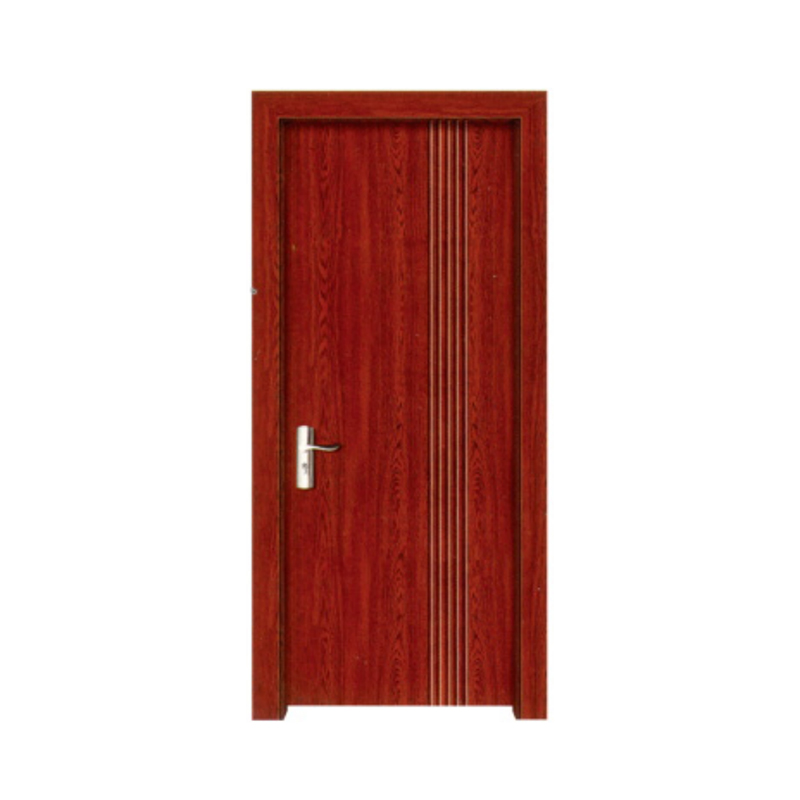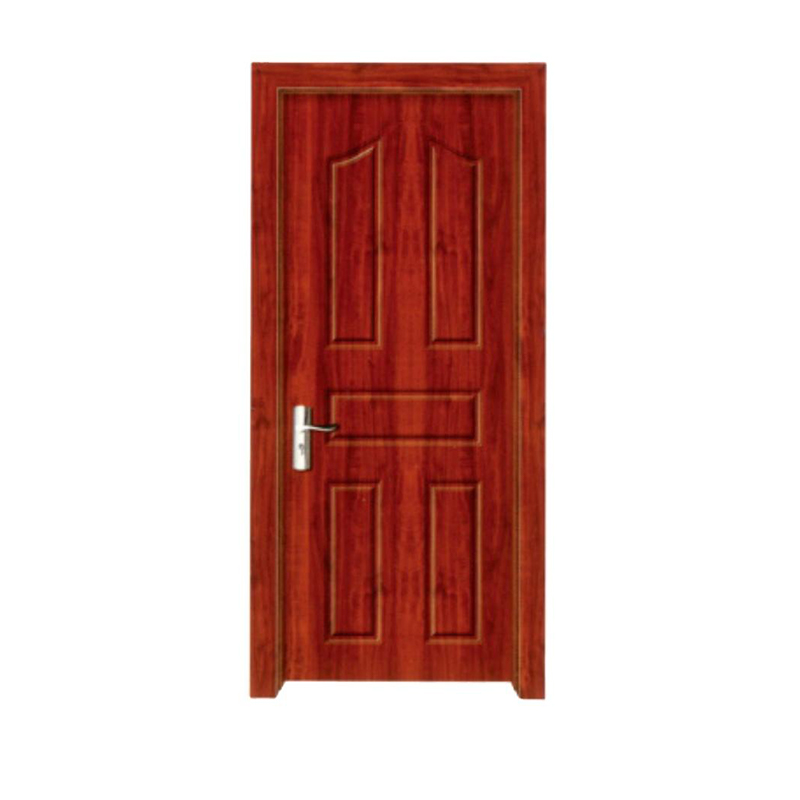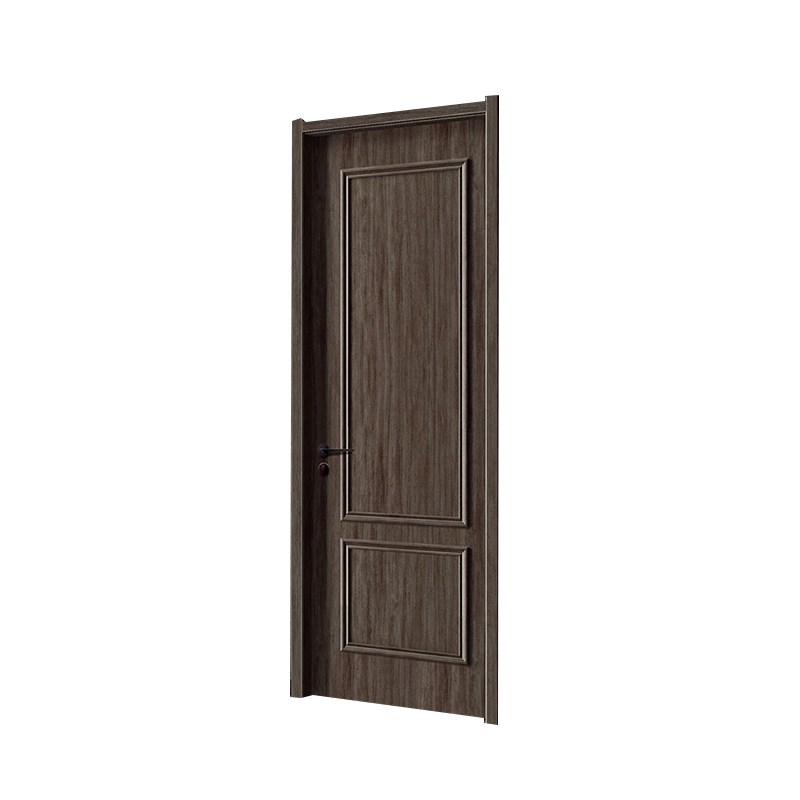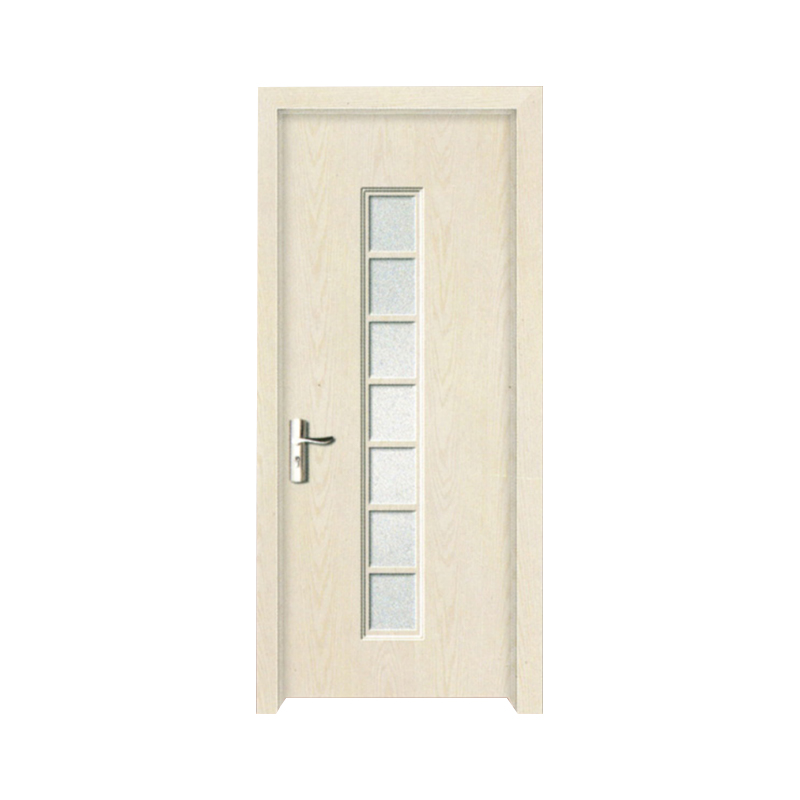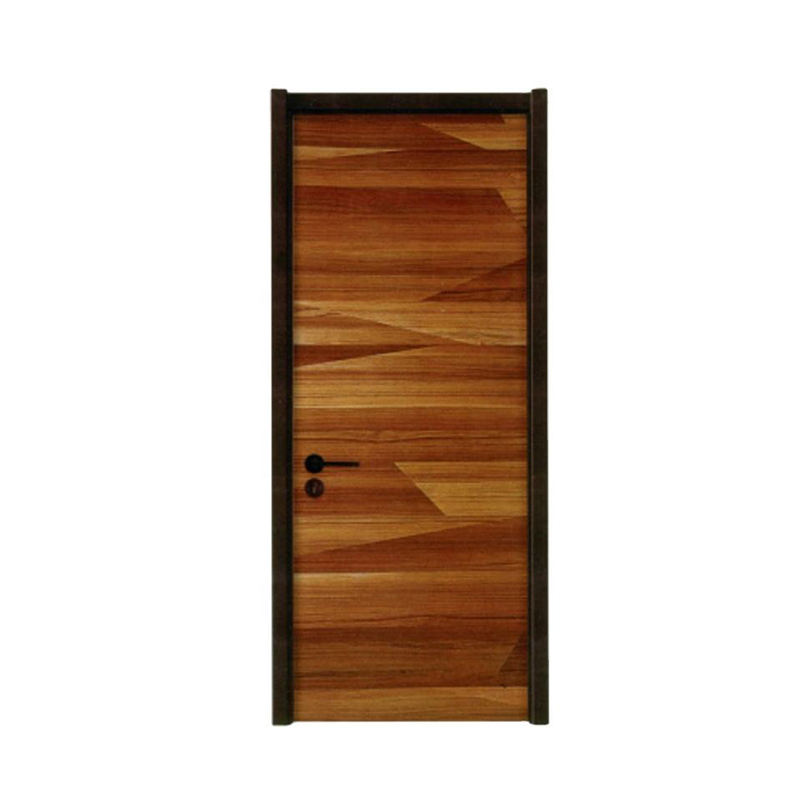When it comes to interior doors, there are various materials available, each with its unique manufacturing process and characteristics. Interior PVC wood doors, solid wood doors, and MDF (Medium-Density Fiberboard) doors are among the most commonly used options. Understanding the manufacturing processes of these materials can help you make an informed choice when selecting doors for your home.
Manufacturing Interior PVC Wood Doors:
1. Material Selection: The production of interior PVC wood doors typically starts with the selection of a wooden core material. This core can be made from various types of wood, including pine, fir, or engineered wood products like particleboard.
2. Melamine Wood Grain Layer: A layer of melamine, a type of resin-based paper with a wood grain pattern, is applied to the wooden core. This melamine layer is what gives the door its wood-like appearance. It is important to note that while it mimics the look of real wood, it is not actual wood.
3. High-Pressure Lamination: The melamine-coated wooden core is subjected to high-pressure lamination. This process ensures that the melamine layer adheres firmly to the core, creating a strong bond. The lamination process also enhances the durability of the door and makes it resistant to scratches, stains, and other forms of damage.
4. Cutting and Shaping: After lamination, the door blank is cut and shaped to the desired dimensions and style. This includes cutting out areas for panels or glass inserts if applicable. The door's edges are also shaped during this phase.
5. Finishing and Hardware Installation: The door is then finished with paint or a clear coat to protect the melamine layer and provide a polished appearance. Hardware such as handles, locks, and hinges are installed at this stage.
Manufacturing Solid Wood Doors:
1. Wood Selection: Solid wood doors are made entirely from natural wood, often hardwoods like oak, maple, cherry, or mahogany. The manufacturing process starts with the careful selection of high-quality lumber.
2. Plank Formation: The selected wood is cut into planks, which are then kiln-dried to reduce moisture content. This step is crucial to prevent warping or cracking of the door.
3. Joinery: Solid wood doors are typically assembled using traditional joinery techniques like mortise and tenon joints. These joints ensure strength and stability.
4. Shaping and Carving: The door is shaped and carved according to the desired design, including any paneling or decorative elements.
5. Finishing: Solid wood doors are often finished with stains, varnishes, or paints to enhance their natural beauty and provide protection. Multiple coats may be applied to achieve the desired finish.
6. Hardware Installation: Similar to PVC wood doors, hardware such as handles, locks, and hinges are installed during the final assembly.
Manufacturing MDF Doors:
1. MDF Panel Creation: MDF doors are made from Medium-Density Fiberboard, which is produced by breaking down wood fibers and combining them with adhesive resins. The resulting MDF panels are uniform and free of knots or imperfections.
2. Panel Cutting: The MDF panels are cut into the desired door shape and size using precision machinery. This step ensures consistent dimensions and smooth edges.
3. Design Integration: MDF doors can be designed with various patterns, grooves, or raised panels, which are often routed or pressed into the MDF surface.
4. Primed Finish: MDF doors are typically primed with a layer of primer to prepare them for painting. This primed surface provides a smooth and even canvas for paint application.
5. Painting: MDF doors are painted with multiple coats of paint to achieve the desired color and finish. The smooth MDF surface allows for a uniform and flawless paint application.
6. Hardware Installation: As with other door types, hardware is installed on MDF doors as part of the final assembly process.
The manufacturing processes of interior PVC wood doors, solid wood doors, and MDF doors differ significantly in terms of materials and techniques. Each type of door has its unique characteristics, making it important to consider factors like durability, aesthetics, and budget when choosing the right interior doors for your home decor. Your choice will ultimately depend on your personal preferences and the specific requirements of your space.


 عربى
عربى





